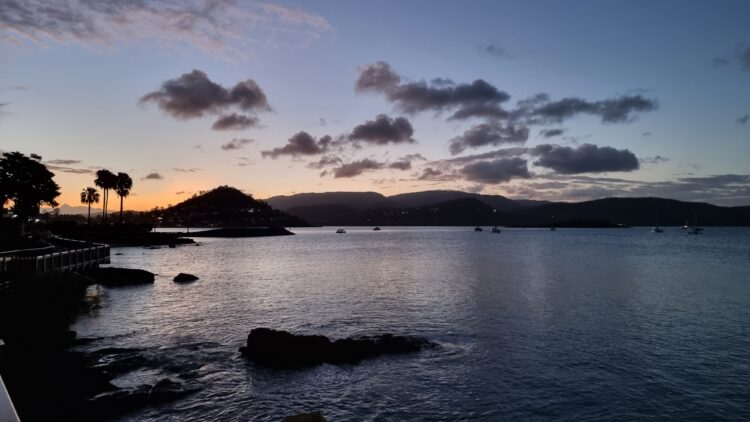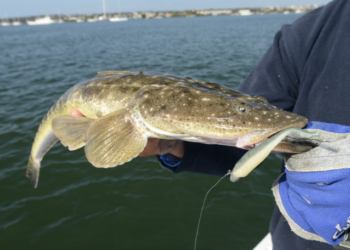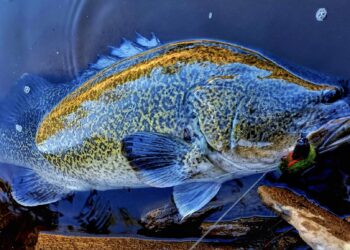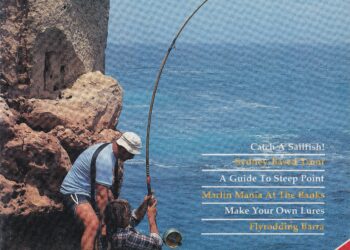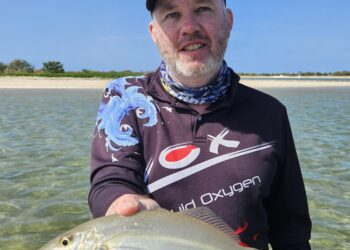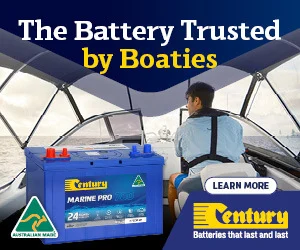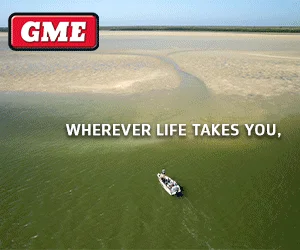SNEAKING a few fishing sessions in on family holidays has become a tradition of mine.
Regardless of where we’ve holidayed over the past 20 years, I’ve always snuck a rod in the car (or on the plane) with a view to having a cheeky cast or two.
My family takes it for granted now. They’re used to me snatching an hour or two of fishing in
between doing other holiday activities. My 13-year-old son now joins me on most of these short,
sharp sessions.
Success is never guaranteed. In fact, the odds are often stacked against visiting fishers.
When you are exploring new areas, and your fishing time is limited, the chances of drawing a
complete blank always rise.
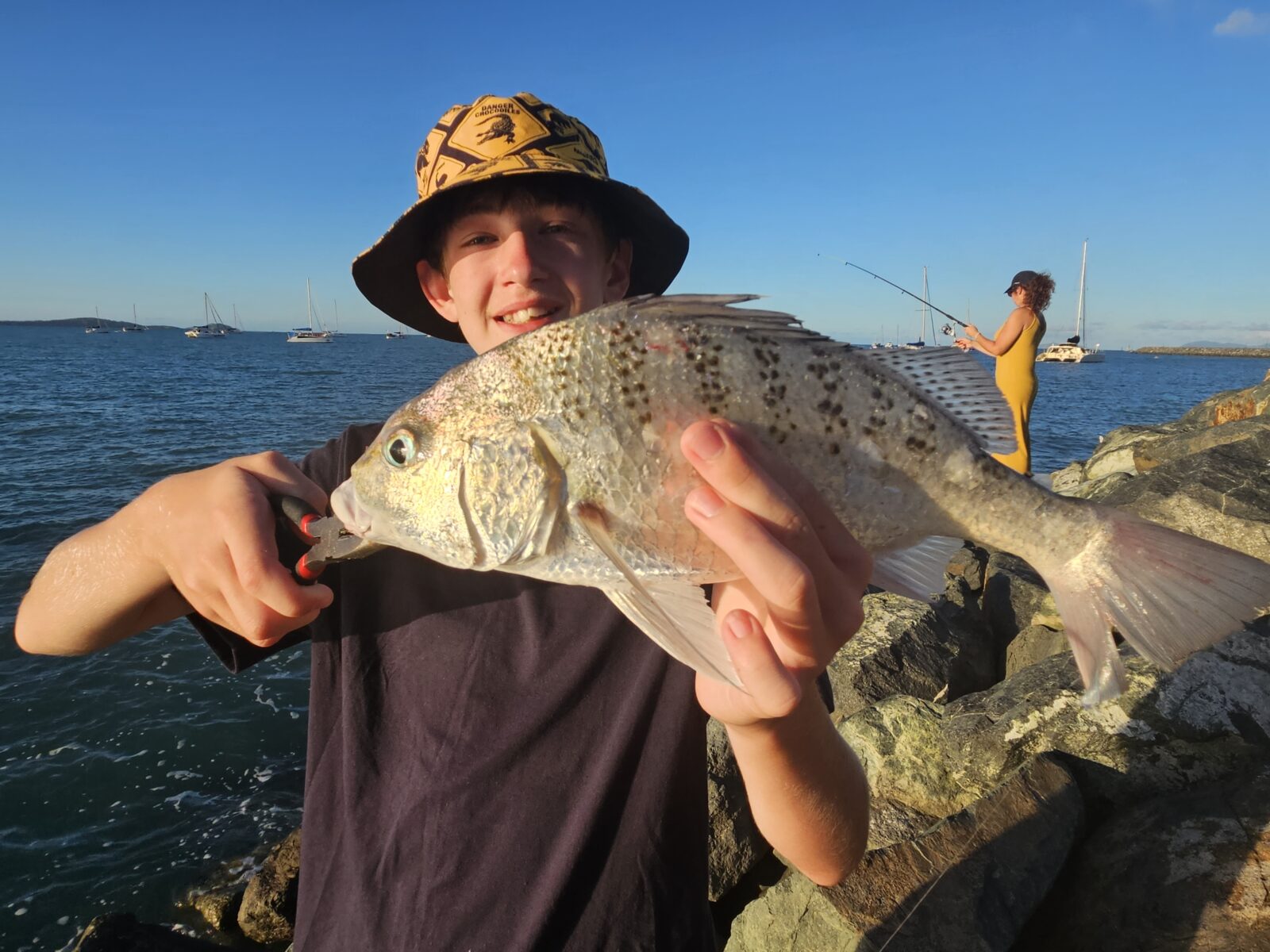
Over the years, though, we have learnt that following a few simple steps tends to maximise my
results in unfamiliar territory.
Our ability to adapt to new surrounds was put to the test on a recent family trip to Airlie Beach, in
the heart of Queensland’s Whitsunday Islands.
Given we had never been to Airlie Beach before, and all our sessions were land-based and within
walking distance of our accommodation, we were more than pleased with our fishing results.
We caught new species, encountered a few surprises, and had a ball along the way.
The cap it all off, by the end of our holiday, locals were actually asking us for fishing advice!
If you’re heading to this sublime piece of paradise – or similar vacation spots in Far North
Queensland – and you’re thinking of wetting a line, here’s some advice that will hopefully help you
hook into a fish or two.
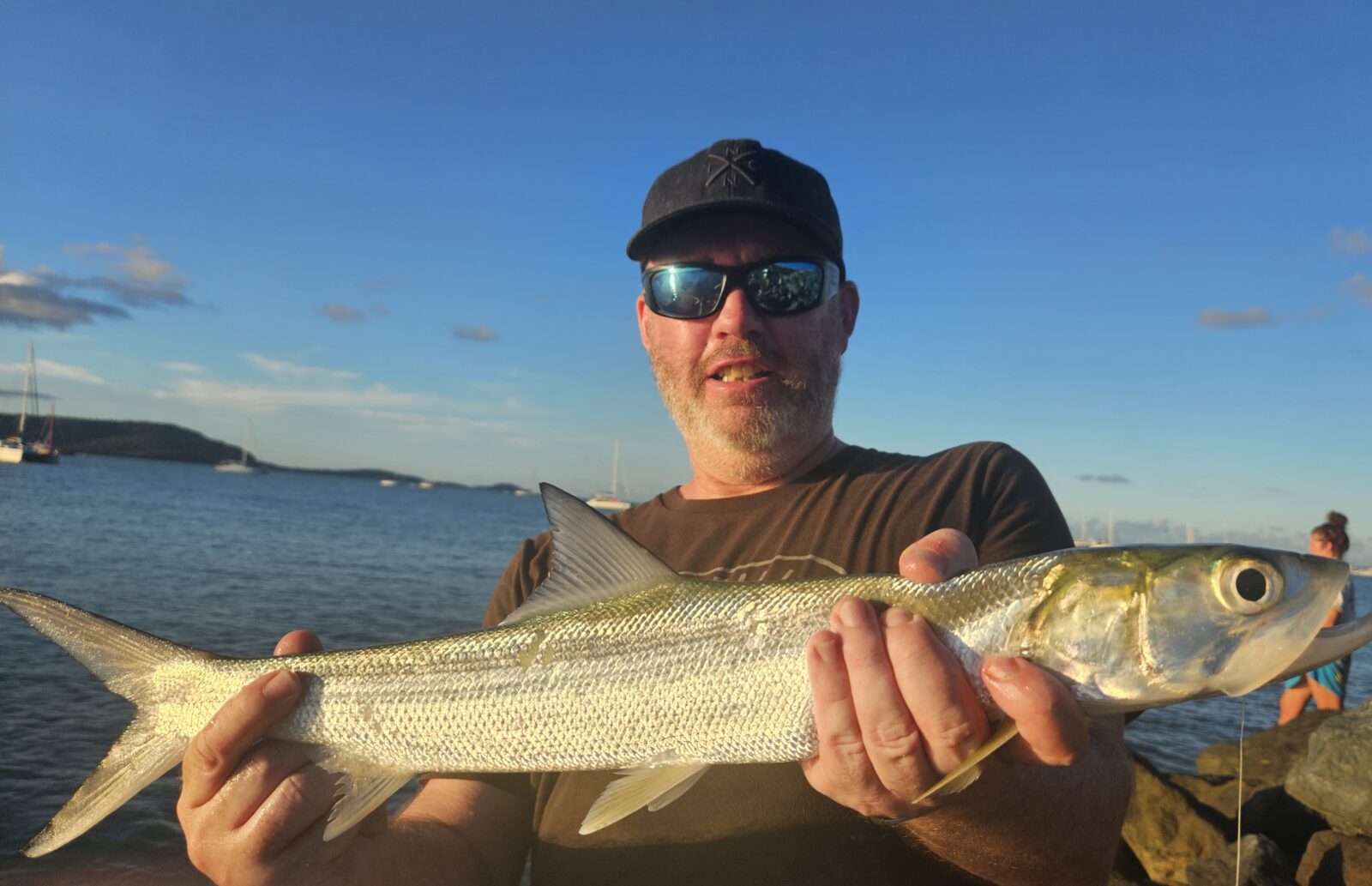
Doing our homework
Even though we’d never been to Airlie, it was easy to get a rough lay of the land before our visit.
Scouring good old Google Earth helped paint a picture of the terrain near our accommodation,
including any likely looking land-based spots.
Cross referencing this information with local fishing reports we found on social media and various
websites, it became clear that decent land-based fishing could be enjoyed from the many rock walls, spits, groynes and points that line the shore in and around the town.
That was good to know – our resort looked to be a stone’ s throw (or a short cast) from a number of fishy-looking rock walls adjacent to the local marine club’s boat ramp.
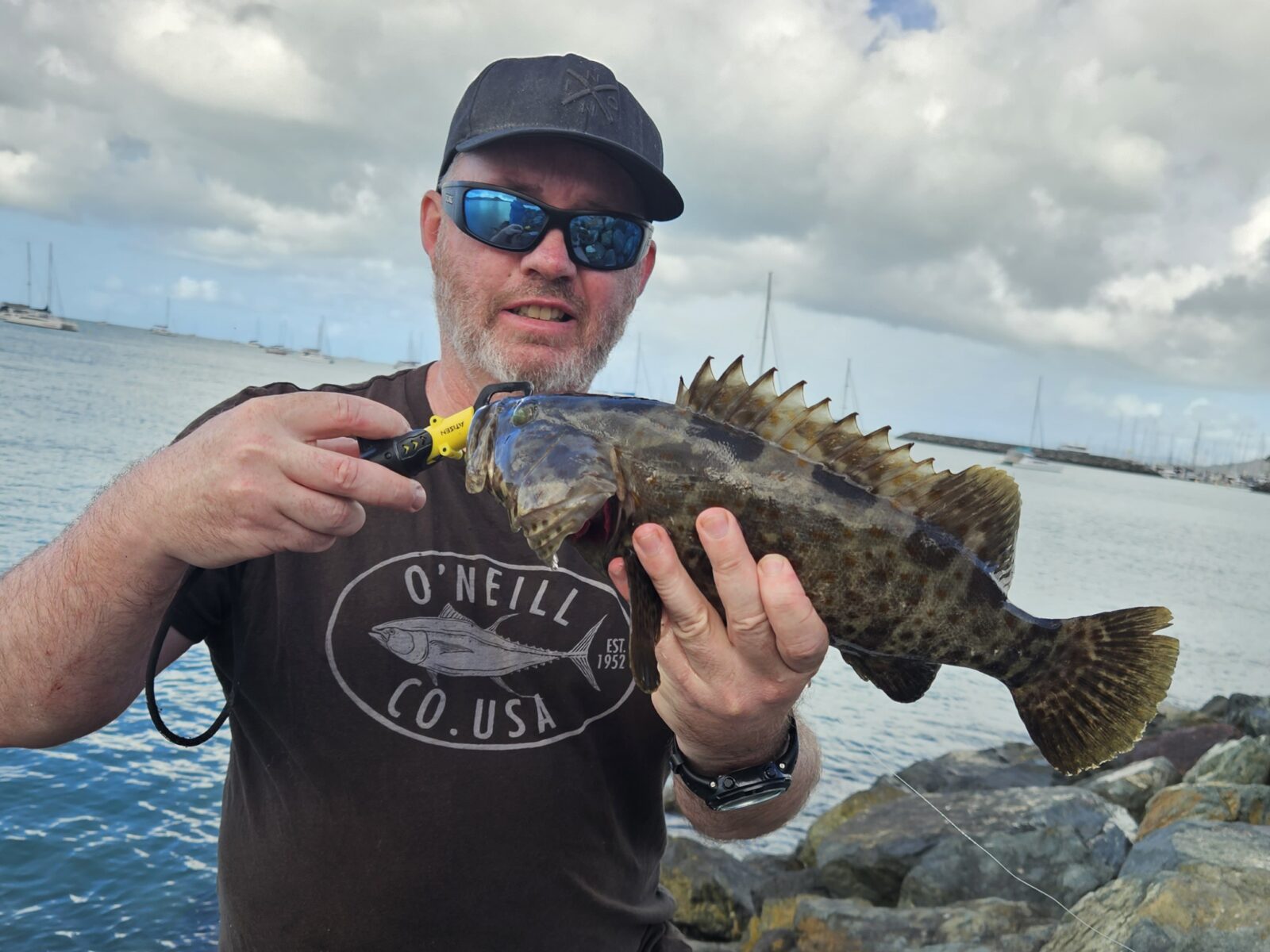
Seeing is believing
Of course, seeing is believing. When we arrived, a late afternoon stroll confirmed that the rock walls that line the shore between Cannondale and the town of Airlie Beach itself would be the best place to start.
The waters around Airlie Beach are comparatively shallow. The man-made walls, while not massive
by any stretch of the imagination, looked like they’d afford us access to slightly deeper water.
They’d also draw baitfish, crabs, prawns and other marine life close to shore, attracting larger prey in the process.
At first glance, there definitely appeared to be fish in the vicinity, with numerous swirls and boils
obvious, despite the fading light.
I always try to seek out local knowledge on every trip to a new area – it’s better than any advice
you’ll find on websites or social media.
A number of local anglers were trying their luck from these very structures as the sun sank over the
horizon. Picking the brain of one in particular confirmed that time and tide, unsurprisingly, would
also play a core role in our fishing fortunes.
Given the shallow water and hot, sunny weather (it was late November), sought after species would venture within casting range on a rising tide either very early or late in the day. This had us fired up for an assault on the local fish over the coming week.
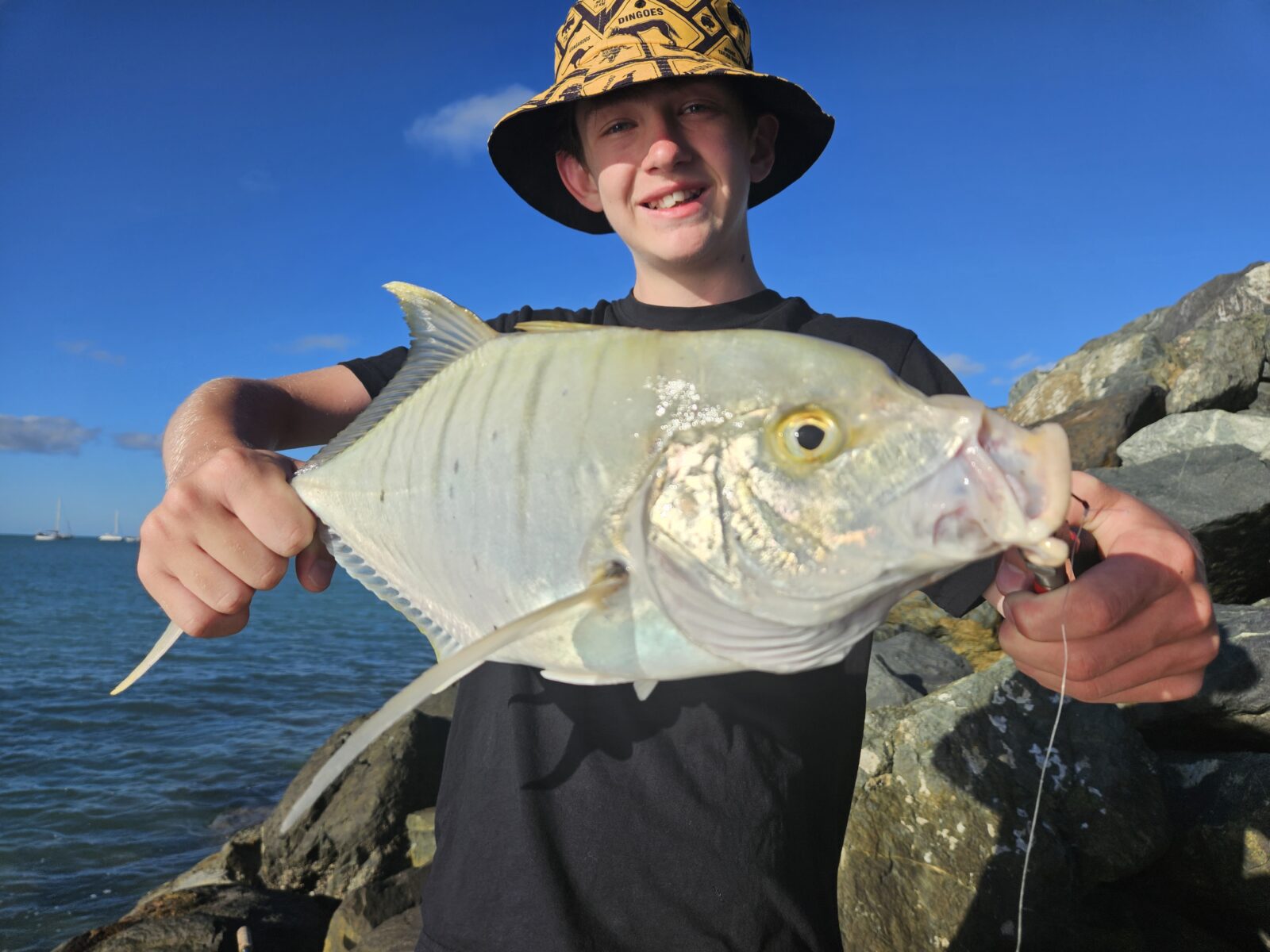
The results
The land-based lure and baitfishing from Airlie Beach’s rock walls proved to be fun and productive.
The rising tide brought a range of species close to the stones each evening, with a mix of soft
plastics, metals and fresh bait catching fish.
We caught a steady stream of solid javelin fish, otherwise known as grunter, which fought doggedly around structure.
These fish are great to eat and we donated quite a few to the many international backpackers who
wandered by to watch our antics.
We also snared a few nondescript cod of various sizes, plenty of pikey bream, as well as small GTs, barracuda, wolf herring and forktail catfish.
The highlight for me was a giant herring – a new species – which spent more time out of the water
than in it, as it fought acrobatically and had me scrambling to keep connected.
My teenage son managed to subdue a solid golden trevally – also a new species – which took a fresh prawn. We also saw turtles, rays, dolphins and sharks.
The most effective lures were soft plastics, with 4-inch Berkley Gulps a favourite. Spinning with small metals was also well worthwhile.
We used light-to-medium spin tackle, 10lb braid, and 10-20lb leader. When baitfishing, small sinkers and hooks, long leaders, and long casts were key. A lot of anglers around us were fishing with much heavier gear but weren’t experiencing anywhere near the success we enjoyed.
We learnt that golden trevally, barramundi, queenfish, mackerel, mangrove jack and mid-sized GTs
are regular catches from the shoreline around Airlie Beach.
Further afield, at Shute Harbour, a 15-min drive from Airlie, the wharves that jut out into relatively
deep water produce some outstanding land-based catches of tuna, mackerel, trevally and sharks.
We didn’t get to sample the fishing at Shute – we were pretty satisfied with the action on our
doorstep.
Maybe next time…





